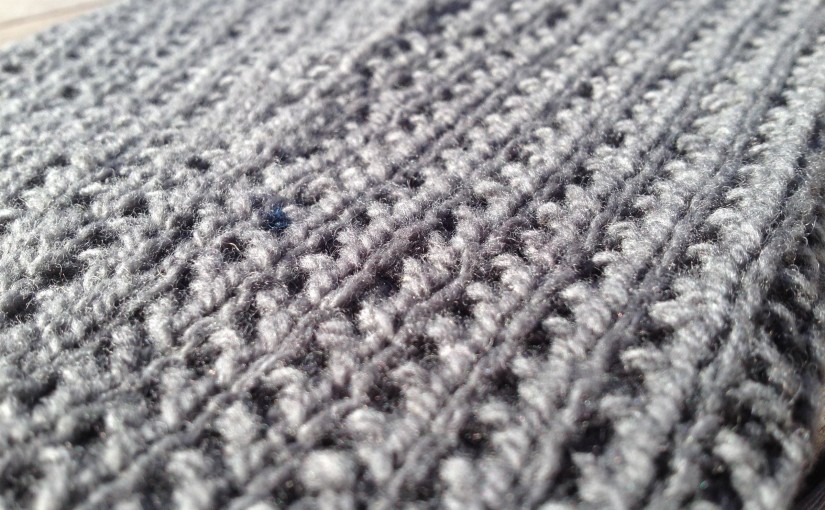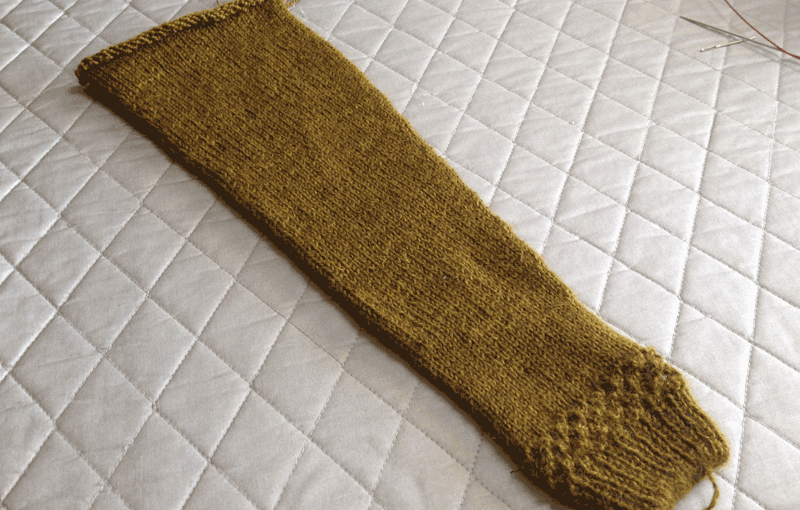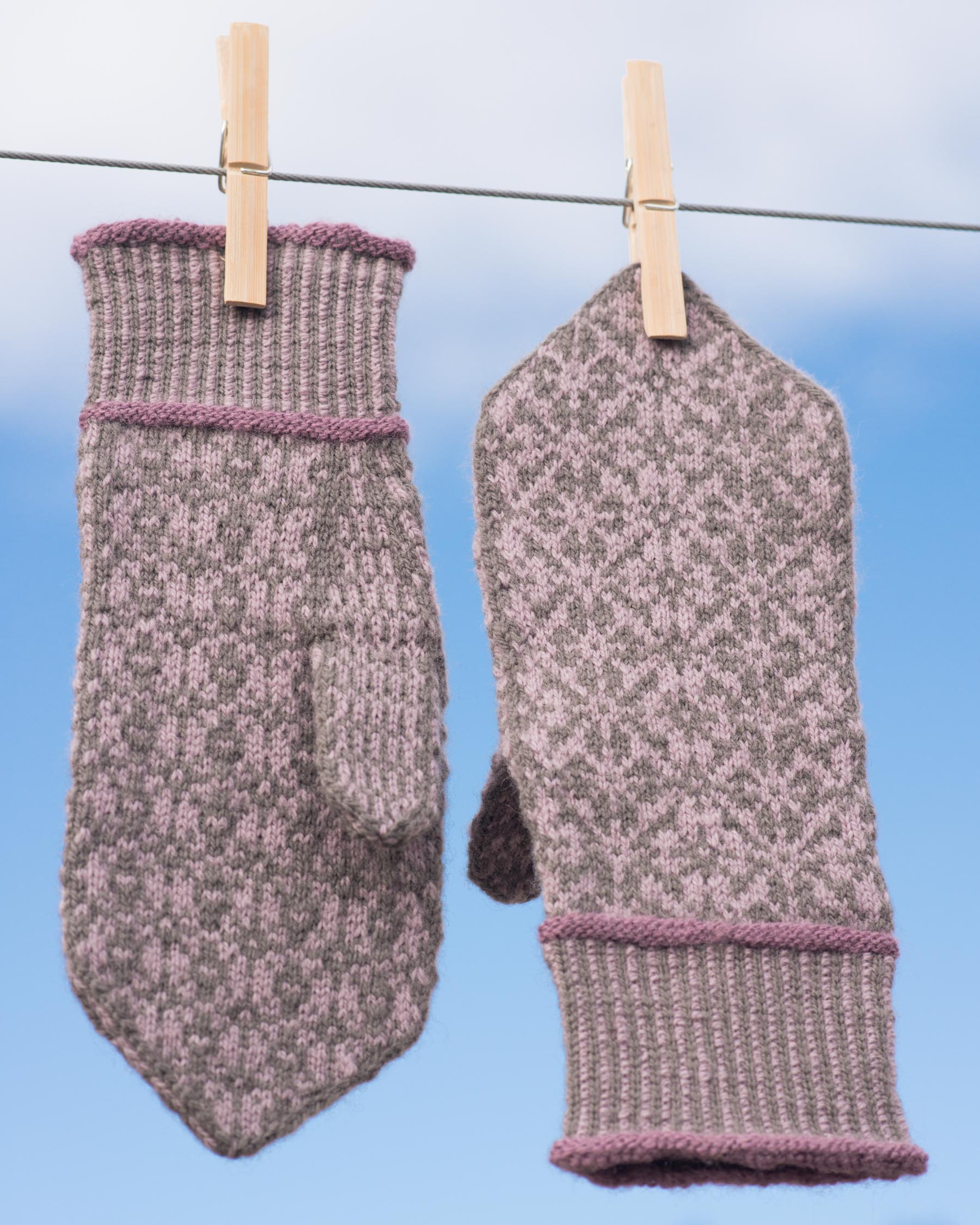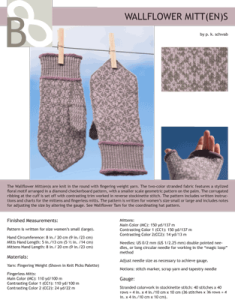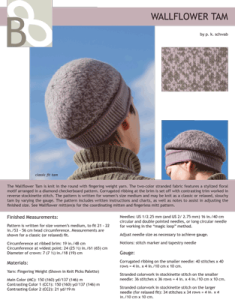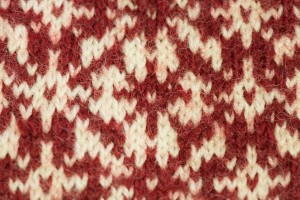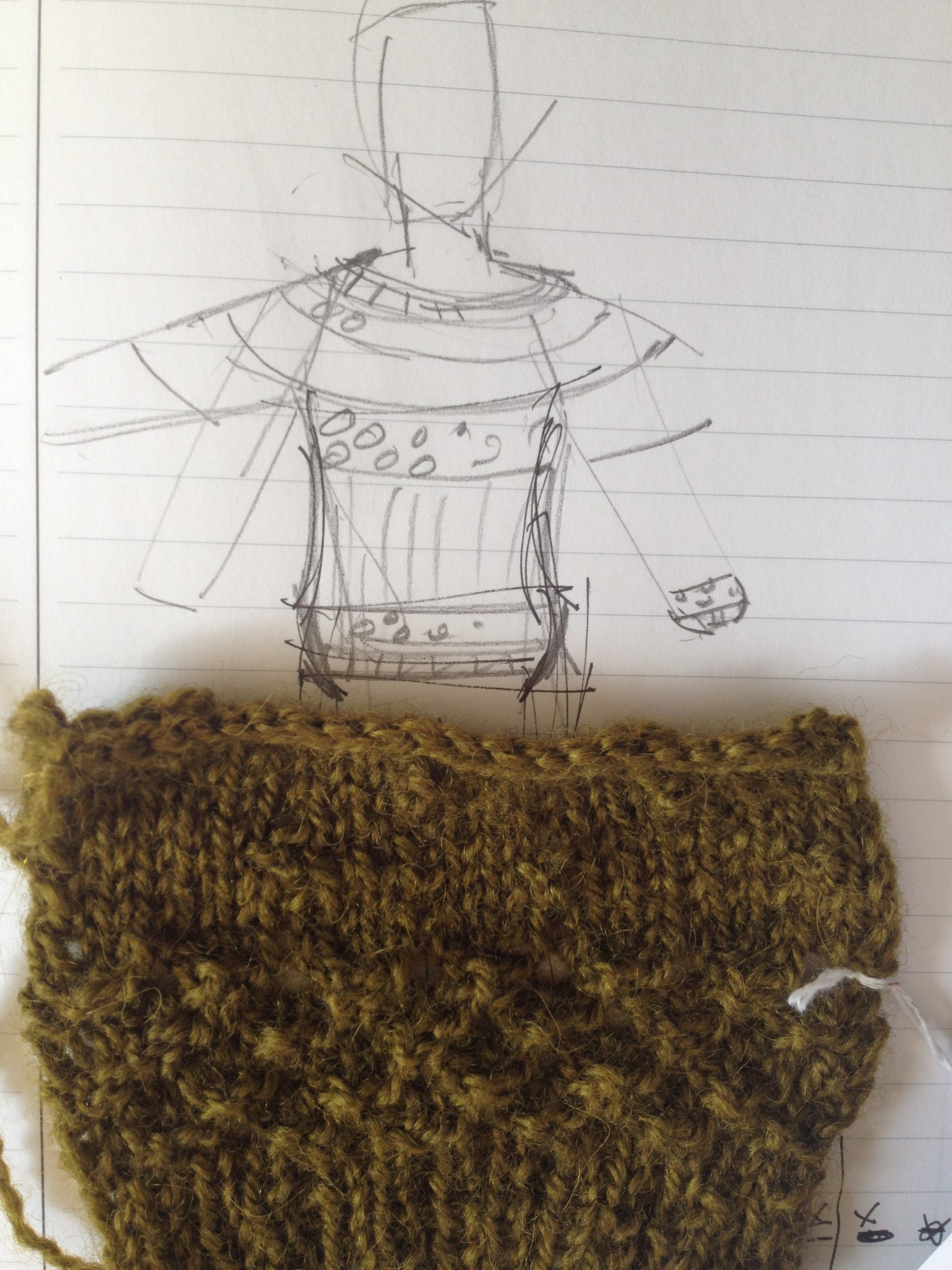I’m right in the middle of knitting two prototype sweaters, trying to be very loyal to my large earth-colored projects, however, someone has very thoughtfully reminded me of how much I adore multi-color stranded knitting. Claire from NH Knits, contacted me a few days ago to share the news of her Stranded Colorwork Mitten KAL on Ravelry (I will be contributing a Base 8 pattern as a prize!) and now I can’t get the image of colorful mittens out of my head. I should put all my yarn under lock and key to reduce temptation. But maybe I could just design a little something in the meantime….
Category: Design Process
A Really Big Swatch
A.K.A. the first sleeve.
Even though knitting patterns usually list the instructions for the sweater body before the sleeves, I almost always knit the sleeves first. Even if I’ve worked a gauge swatch and feel fairly confident that I’m on track size-wise, I like the idea of getting at least one sleeve knit, and blocked, to double check myself before I tackle the body. It’s not the end of the world to rip out and rework a sleeve, if necessary, but the heartache of learning that an entire sweater is wrong – aaagh! Plus, working the sleeves after the body always seems like a cruel interruption – the finish line seems so close, except for those two pesky appendages.
So, with my newest design, I have, of course, worked the sleeves first, and I did learn a few lessons. The sleeve stitches are just a bit narrower and longer than my swatch stitches. This is not a shocking revelation. I’m creating a fairly open fabric with a bit of drape this go-around, and in the past I’ve discovered that with a larger piece of a loose-ish knit fabric, the gauge can shift a bit. In this case, it’s no biggie. I will pull out a few rows to shorten the length of the first sleeve, and since I have skinny scarecrow arms, the width isn’t a problem – although I will adjust the stitch counts a bit when I write up the pattern. I did, however, take the opportunity to rework the stitch and row counts for the body before I cast on. I also learned that my tubular cast on at the wrist wasn’t quite as elastic as I wanted, so I adjusted my tubular technique when I cast on the hip cuff – I definitely want to make sure I have a bit of give there!
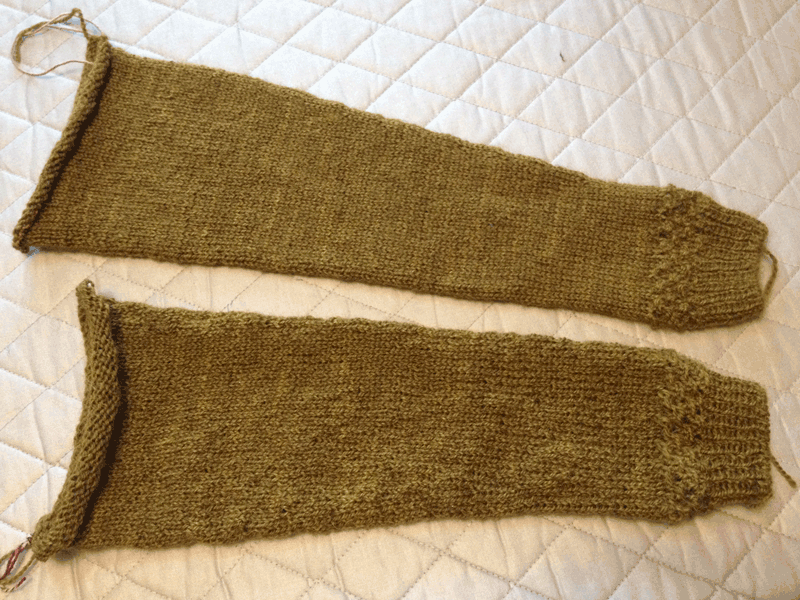
Also, keep in mind, when using a sleeve as a big swatch, blocking is an important part of the process. Here you can see one blocked sleeve (above), and one unblocked. It’s really hard the get a sense of the drape and fit of the bottom sleeve and I probably could have fooled myself that it would be perfect once it had a bath and a bit of a wrangling on a blocking mat.
Wallflowers
Phew. Twenty fourteen was a great year for me in many respects, but I’m also very pleased to see the turning of the calendar – and I’m celebrating by releasing two long awaited patterns. I like starting off on the right foot!
The Wallflower designs began over a year ago (my how time flies) when I decided my mom needed a fancy tam and mitten set. Yes, I decided that without consulting her. Anyway, perhaps you’ve noticed, but I’ve been just a little bit obsessed with stranded colorwork accessories for the last few years. I love how the small pieces allow me to play around with color and design motifs in a way that’s more difficult with larger scale items.
My previous colorwork designs have leaned towards the whimsical (elephants, anyone?), however, that really isn’t my mom’s scene. I felt like she would prefer something a bit more subtle, like a simple, allover floral pattern. I also wanted to play around with positive/negative space and tessellated geometry, you know, just because. The resulting stitch pattern is a small scale checkerboard of diamonds framing stylized 4-petal flowers. For the samples that are featured in the pattern, I chose colors that are similar in value, so the resulting fabric is very subtle. However, the first prototype was knit in red and white, for a much more dramatic effect:
I love the way swapping out colors can totally change the way a design feels. I can’t wait to see what color combinations everyone else chooses!
The Next Yarn is Always Greener
Like everyone else this time of year, I’m scrambling to complete several small gift knits. However, I’m also dreaming of the next new design: a softy, mossy-green sweater. A rough sketch and some swatches have been converted to a scale drawing and spreadsheet – now I just need to finish everything else so I can cast on!
